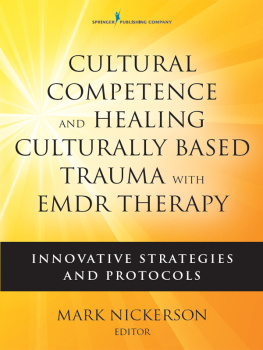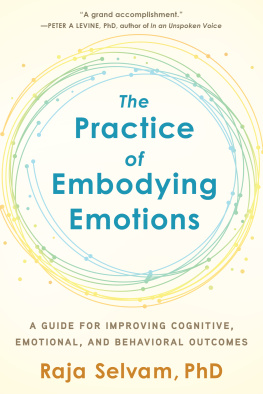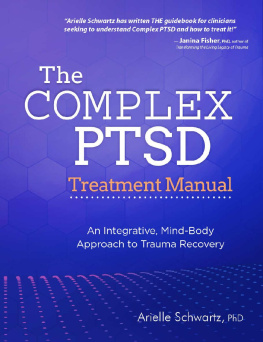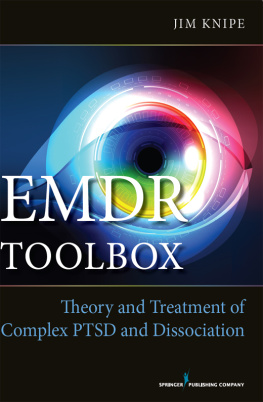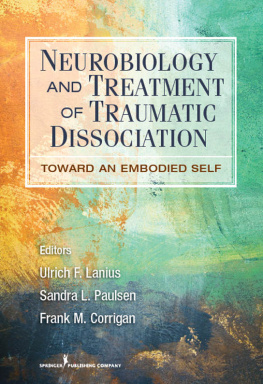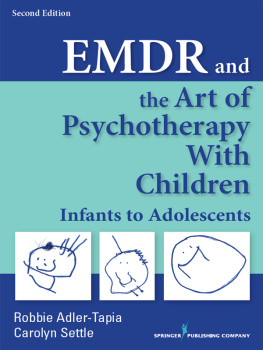
EMDR Therapy and Somatic Psychology
EMDR Therapy and Somatic Psychology
Interventions to Enhance Embodiment
in Trauma Treatment

Arielle Schwartz | Barb Maiberger
Foreword by Robin Shapiro

W. W. Norton & Company
Independent Publishers Since 1923
New York London
To those who believe that healing is possible:
listen to your intuition and let it guide you.
by Robin Shapiro
O ver the last four decades, my own training as a therapist has included EMDR therapy, ego state work, relational, and mindfulness interventions that combine working cognitively and somatically. EMDR Therapy and Somatic Psychology brings together the best of these useful modalities, in one place. Arielle Schwartz and Barb Maiberger skillfully teach how to bring somatic, mindfulness, and relational therapies into the EMDR protocol. And they do it in plain English, with wonderful scripts that will teach clinicians how to guide clients into embodied and relational awareness with many lovely, helpful interventions. The book reviews neuroscience in easy-to-understand language and gives a structure for particular interventions to handle a wide range of clients concerns and symptoms.
Schwartz and Maiberger began their training in the field of somatic psychology in the 1990s and have been teaching EMDR therapy and somatic psychology for nearly 20 years. There are existing books in the field on EMDR therapy and existing books on Somatic Psychology, but such a practical combination has been a missing contribution in the field until now. The authors make a strong case for the integration of these two psychotherapeutic modalities with the neuroscience to back it up. You will find that they co-wrote this book with one clear consistent voice, making complex clinical situations understandable and treatable with interventions that safely guide clients toward healing.
Many EMDR therapists dutifully reference bodily sensations in performing the Standard Protocol, without much understanding of why they do it and how to bring more focus, understanding, and integration into the therapy. After you read this book, you will know why, when, and exactly how to bring focus to sensations, emotions, and awareness itself into the therapy. The Interventions section of the book will give you the language, observational tools, and specific instructions to help your clients become more conscious of their own somatic process. These interventions include helping the client develop awareness and containment of somatic distress, instructions on how to ground, tools for working with the breath, and guidance for an embodied exploration of boundaries. I was delighted to find the pendulation techniques, which guide clients to alternate between resourced and distressed states or between internal and external awareness, both of which can help regulate clients affect tolerance through the eight phases of EMDR therapy. Also included are target development scripts developed through sensate focus, which are most beneficial for those clients who feel a lot and remember little. I had never heard of telling a story without words and am excited to try this one out. It seems like a great way to get avoidantly verbose clients out of their heads and into their emotions and sensations. The end of this chapter offers somatic methodologies to boost EMDR processing with somatic repatterning during desensitization, specific somatic interweaves to move stuck processing along, and helping clients truly embody the changes the processing has given them.
The chapter discussing complex trauma is especially helpful as their discussion of dissociation and ego states is deep, clear, and specific. Schwartz and Maiberger use many popular resource techniques including teams of allies (like Roy Kiessling [2005] and Laura Parnells [2013] work) but embody both the allies and the distressed parts for nurturing, rescuing, and re-enacting. Their targeting protocols are superb and provide options such as starting with stories, sensations, or parts, and bringing in allies, sensations, postures, and movement to repair what was broken, or never grown in the first place. Each is specific, clearly written, and gives you the steps and the words to say to assist the growth of healthy attached clients.
Another good chapter deals with pain and illness, the perfect focus for somatic work. As in the rest of the book, you are walked through specific history, preparation and resourcing sections, and many good clearing interventions for chronic pain. The self-care mental movie provided in this chapter would be good for any client! You will also find easy and helpful yoga interventions to assist clients with building their distress tolerance. Two lovely interventions focus on self-compassion and gratitude which can be helpful for any client, any person, and even therapists.
I was surprised and delighted to see culture that is expressed through movement, postures, gestures, interactional styles, and behaviors (p. 258) addressed in this book. Culturally sensitive therapy is essential. The chapter reminds us that it is necessary to work with non-verbal communication and other manifestations of embodied culture and provides practical tools for how to do so. There are culturally-attuned questionnaires that will help you identify the positive and negative aspects of cultural identity including culturally-based negative cognitions. Using this information, you can assist clients to bring in cultural resources and allies to use as part of the Empowerment Mental Movie script.
If you havent noticed how your clients emotions resonate inside your body, youll be noticing it now, and funneling that knowledge into your therapeutic work. This book concludes with a chapter of embodiment tools for your own care to help you work through such somatic countertransference successfully. As a clinical consultant, I see therapists struggle with the introjected emotions and dissociated states in their own body. When an intelligent, articulate clinician stammers, spaces out, and is unable to have their usual clear narrative about a client, I often ask, Where are you holding that client (or that clients distress) inside of you? Schwartz and Maiberger explain how to deal with many aspects of the stress and burnout of working with traumatized, dissociated clients. This chapter will help you recognize symptoms of somatic countertransference or vicarious traumatization. They explain how such distress might show up in your body and what you can do to take care of yourself, before, during, and after sessions. Their interventions are clear, imaginative, easy-to-use, and effective, as are all the interventions in this book.
I recommend that you read through this book carefully and begin to integrate these embodiment practices into your work with your clients. Over time, you will have somatic interventions in your bones. This book will give you many new interventions, but dont stop there. Take what you learn from this book, use it with your clients, make it yours, and find your own new ways to combine EMDR therapy, somatic, mindful, and expressive therapies.
I n 1999, we were invited to join the faculty in the psychology department at Naropa University to co - teach courses in somatic psychology. This began our journey of collaborating and teaching together. Since that time, we both proceeded to train in and eventually become trainers in EMDR Therapy. In the last decade, we have brought these two modalities together in the form of advanced EMDR workshops with an emphasis on integrating somatic psychology principles for the treatment of trauma, developmental attachment injuries, and chronic pain. These workshops were the impetus for the development of this book. Moreover, our work is infused with a set of shared values that characterize who we are as peoplea deep commitment to our own personal growth and a heartfelt respect for our clients who model the courageous resilience of the human spirit on a daily basis.
Next page




